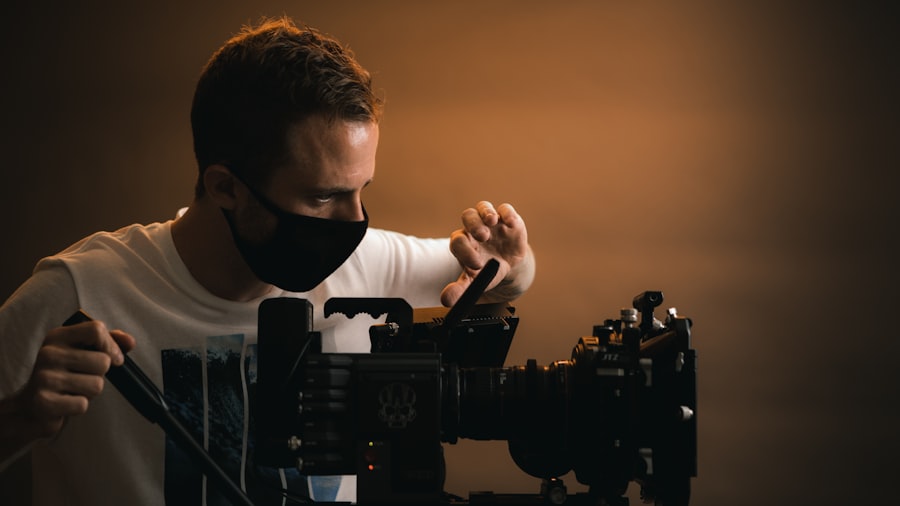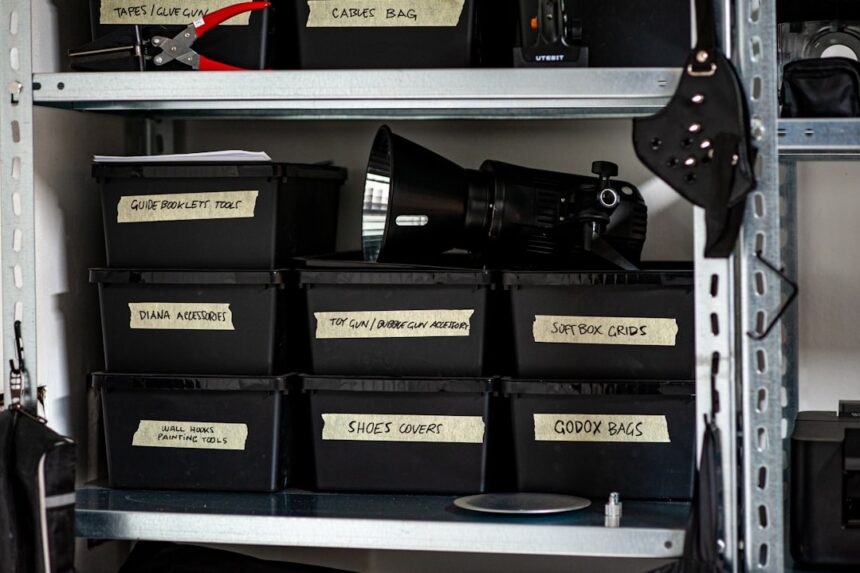Film censorship has long been a contentious issue, reflecting the complex interplay between artistic expression and societal norms. As a medium that can evoke powerful emotions and provoke thought, film often finds itself at the crossroads of cultural values, political agendas, and moral standards. The act of censoring films can take many forms, from outright bans to the editing of specific scenes deemed inappropriate.
This practice raises critical questions about freedom of expression, the role of government and private entities in regulating content, and the impact of censorship on creativity and storytelling. The history of film censorship is as varied as the films themselves, with different countries adopting distinct approaches based on their cultural contexts. In some instances, censorship has been employed to protect audiences from perceived moral decay, while in others, it has served as a tool for political control.
As society evolves, so too does the conversation surrounding film censorship, making it a dynamic and often controversial topic that continues to shape the cinematic landscape.
Key Takeaways
- Film censorship has a long history, with early forms of censorship dating back to the early 20th century.
- The Hays Code and self-regulation in the 1930s had a significant impact on film censorship in the United States.
- The Production Code Administration was established to enforce the Hays Code and regulate film content.
- The MPAA rating system was introduced in the late 1960s as a replacement for the Production Code Administration.
- The rise of independent film ratings boards and the impact of digital distribution have changed the landscape of film censorship in contemporary times.
Early Forms of Film Censorship
The roots of film censorship can be traced back to the early 20th century when the burgeoning film industry began to attract scrutiny from various sectors of society. In its infancy, cinema was often viewed with suspicion, as many believed that moving images could corrupt morals and influence behavior. This apprehension led to the establishment of local censorship boards in several countries, which sought to regulate content deemed unsuitable for public consumption.
These early forms of censorship were often inconsistent and arbitrary, reflecting the personal biases of board members rather than any standardized criteria. As films became more popular and influential, the need for a more organized approach to censorship became apparent. In the United States, for example, the Motion Picture Patents Company was formed in 1908 to control the production and distribution of films.
However, this monopoly faced significant backlash from filmmakers and audiences alike, leading to calls for a more equitable system. The result was a patchwork of state and local regulations that varied widely across the country, creating confusion and frustration within the industry.
The Hays Code and Self-Regulation

In response to growing concerns about the moral implications of film content, the Hays Code emerged in the 1930s as a self-regulatory framework for Hollywood. Officially known as the Motion Picture Production Code, it was designed to ensure that films adhered to a set of moral guidelines that reflected the values of American society at the time. The code prohibited depictions of violence, sexual content, and other themes considered inappropriate for general audiences.
Filmmakers were required to submit their scripts for approval before production could begin, effectively placing creative expression under the watchful eye of censors. The Hays Code had a profound impact on the film industry, shaping not only what stories could be told but also how they were presented. Filmmakers often had to employ creative techniques to convey their messages within the constraints of the code.
This led to a unique style of storytelling that relied heavily on subtext and innuendo, as filmmakers sought to navigate the limitations imposed upon them. While some filmmakers embraced these challenges as an opportunity for innovation, others found the restrictions stifling, leading to a growing discontent within the industry.
The Production Code Administration
| Year | Number of films reviewed | Number of cuts requested | Number of films rejected |
|---|---|---|---|
| 1934 | 67 | 1,086 | 0 |
| 1935 | 74 | 1,067 | 0 |
| 1936 | 82 | 1,073 | 0 |
The enforcement of the Hays Code was overseen by the Production Code Administration (PCA), an organization established in 1934 to ensure compliance with the code’s guidelines. The PCA was tasked with reviewing scripts and finished films, granting approval only if they met the established moral standards. This process often involved extensive negotiations between filmmakers and censors, as studios sought to balance artistic vision with commercial viability.
The PCA’s influence extended beyond mere content regulation; it also shaped marketing strategies and audience expectations. As time went on, however, the rigid structure of the Hays Code began to crumble under pressure from changing societal attitudes. The cultural upheaval of the 1960s and 1970s brought about significant shifts in public perception regarding issues such as sexuality, violence, and race.
The once-powerful code ultimately became an anachronism in a rapidly evolving cultural landscape.
The MPAA Rating System
In 1966, in response to growing dissatisfaction with the Hays Code and its enforcement, the Motion Picture Association of America (MPAA) introduced a new rating system designed to provide audiences with information about film content without imposing strict censorship. This system categorized films into ratings such as G (General Audience), PG (Parental Guidance), R (Restricted), and NC-17 (No One 17 and Under Admitted). The goal was to empower viewers—particularly parents—by allowing them to make informed choices about what films were appropriate for themselves or their children.
The MPAA rating system marked a significant shift in how films were regulated in the United States. Rather than outright censorship, filmmakers were now encouraged to create content that could appeal to specific audiences while still adhering to general guidelines. This change allowed for greater creative freedom and diversity in storytelling, as filmmakers explored themes that had previously been deemed too controversial for mainstream audiences.
However, this newfound freedom also came with its own set of challenges, as filmmakers navigated the complexities of audience expectations and marketability.
The Decline of Government Censorship

As societal attitudes continued to evolve throughout the late 20th century, government censorship began to decline in many parts of the world. The rise of civil rights movements and increased advocacy for free speech led to a reevaluation of censorship practices that had long been accepted as necessary for public morality. In many countries, including the United States, there was a growing recognition that individuals should have the right to access diverse viewpoints and make their own choices regarding film content.
This shift away from government censorship was further fueled by advancements in technology and media distribution. The emergence of home video and cable television provided audiences with greater access to films that may have been previously restricted or censored in theaters. As viewers gained more control over their viewing experiences, calls for government intervention diminished.
This trend signaled a broader cultural shift toward valuing personal freedom over imposed moral standards.
The Rise of Independent Film Ratings Boards
In response to changing attitudes toward censorship and film content regulation, independent film ratings boards began to emerge in various regions around the world. These organizations sought to provide alternative rating systems that reflected local cultural values while allowing filmmakers greater creative freedom. Unlike traditional censorship boards that imposed strict guidelines, independent ratings boards often focused on providing context and information about film content without outright bans.
These independent boards have played a crucial role in shaping contemporary discussions about film censorship. By offering nuanced perspectives on sensitive topics such as violence, sexuality, and race, they have encouraged filmmakers to explore complex themes while still being mindful of audience sensitivities. This approach has fostered a more inclusive cinematic landscape where diverse voices can be heard without fear of retribution or censorship.
The Impact of Digital Distribution on Censorship
The advent of digital distribution has revolutionized how films are produced, marketed, and consumed. Streaming platforms have emerged as powerful players in the entertainment industry, providing filmmakers with new avenues for reaching audiences without relying on traditional distribution channels. This shift has significant implications for film censorship, as digital platforms often operate outside established regulatory frameworks.
With fewer restrictions on content compared to traditional theaters, filmmakers are now able to explore themes that may have been previously deemed too controversial or taboo. However, this newfound freedom also raises questions about accountability and responsibility in content creation. As audiences gain access to an unprecedented array of films from around the world, discussions surrounding censorship have become increasingly complex—balancing artistic expression with ethical considerations regarding representation and sensitivity.
Contemporary Issues in Film Censorship
In today’s globalized world, film censorship remains a pressing issue that continues to spark debate among filmmakers, audiences, and policymakers alike. Contemporary discussions often center around themes such as representation, cultural appropriation, and social justice—topics that challenge traditional notions of censorship while highlighting the importance of diverse voices in storytelling. As filmmakers strive to create authentic narratives that resonate with audiences across cultural boundaries, they must navigate an increasingly complex landscape where sensitivity and artistic expression intersect.
Moreover, contemporary issues surrounding film censorship are further complicated by social media’s influence on public discourse. Online platforms have become powerful tools for advocacy and activism, allowing marginalized voices to challenge mainstream narratives and demand accountability from filmmakers and studios alike. As audiences become more vocal about their expectations regarding representation and inclusivity in film content, filmmakers must grapple with balancing creative freedom against societal pressures for responsible storytelling.
International Perspectives on Film Censorship
Film censorship is not confined to any single country; rather, it is a global phenomenon shaped by diverse cultural contexts and political landscapes. Different nations approach censorship through varying lenses—some prioritize protecting national interests or cultural heritage while others emphasize individual freedoms or artistic expression. For instance, countries like China maintain strict control over film content through government regulations aimed at preserving social stability and promoting state-approved narratives.
Conversely, nations with more liberal approaches may prioritize free speech but still grapple with challenges related to hate speech or harmful stereotypes in film content. These international perspectives highlight how cultural values influence perceptions of censorship and underscore the need for ongoing dialogue about balancing artistic expression with ethical considerations across borders.
The Future of Film Censorship
As society continues to evolve alongside technological advancements, the future of film censorship remains uncertain yet ripe with possibilities. The rise of digital platforms has democratized access to filmmaking tools and distribution channels, empowering diverse voices that challenge traditional narratives while pushing boundaries in storytelling. However, this shift also necessitates ongoing conversations about accountability—how filmmakers can responsibly navigate sensitive topics while fostering inclusivity within their work.
Moreover, as global conversations surrounding representation and social justice gain momentum, filmmakers will likely face increasing scrutiny regarding their choices in storytelling. The future may see a move toward collaborative approaches where filmmakers engage with communities affected by their narratives—creating spaces for dialogue that enriches storytelling while honoring diverse perspectives. In conclusion, film censorship is an intricate tapestry woven from historical precedents, cultural values, technological advancements, and evolving societal norms.
As filmmakers continue to navigate this complex landscape—balancing artistic expression against ethical considerations—the conversation surrounding censorship will undoubtedly persist as an essential aspect of cinema’s ongoing evolution.
In exploring the intricate history of government film control, it’s essential to consider the broader context of media regulation and its impact on public perception. An insightful related article can be found on the website “In The War Room,” which delves into various aspects of media influence and control. For a deeper understanding, you can read more about these dynamics by visiting this article on media influence. This resource provides valuable perspectives on how governments have historically managed and manipulated film content to align with political agendas and societal norms.
CHECK THIS OUT! 📽️🎞️ Hollywood’s Secret War: How the CIA Rewrote Movies
FAQs
What is government film control?
Government film control refers to the regulation and censorship of films by government authorities. This can include the imposition of content restrictions, age ratings, and other forms of oversight to ensure that films comply with legal and cultural standards.
When did government film control begin?
Government film control has been in place since the early days of cinema. In the United States, for example, the Motion Picture Production Code, also known as the Hays Code, was established in 1930 to regulate the content of films.
What are the reasons for government film control?
Government film control is often implemented to protect public morals, maintain social order, and uphold national security. It can also be used to prevent the dissemination of harmful or offensive content, such as violence, obscenity, and propaganda.
How does government film control vary by country?
Government film control varies widely from country to country. Some nations have strict censorship laws that heavily regulate the content of films, while others have more lenient or decentralized systems of oversight. In some cases, government film control may be used as a tool for political censorship and propaganda.
What are some examples of government film control in history?
One notable example of government film control is the establishment of the Motion Picture Production Code in the United States, which heavily regulated the content of Hollywood films from 1930 to 1968. Another example is the strict censorship laws imposed by authoritarian regimes, such as the Soviet Union and Nazi Germany, to control the content of films and suppress dissent.




